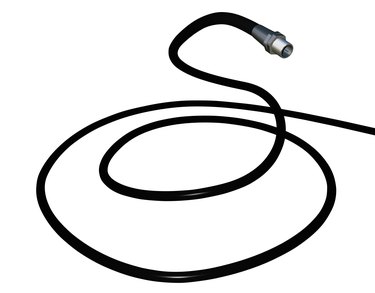
Installation Cost
The BNC in BNC cable refers to the connectors on the end (British Naval Connector or Bayonet Neill Concelman--opinions vary on the source of the name). The cable used determines the performance and it comes in several categories. If your application permits, you can run the least expensive of the types: 10Base2 coaxial cable (sometimes called "thinnet"). The "2" in 10Base2 refers to the maximum length the cable should be run. In this case, 200 meters (about 656 feet).
Maximum Distance
Video of the Day
Though more expensive, 10Base5 coaxial cable (sometimes called "thicknet") can be run as far as 500 meters (about 1,600 feet). However, distances as far as 2,800 meters (about 9,186 feet) are possible using signal repeaters along the line at 500-meter intervals. Adding a signal repeater and booster, as cable television providers do, at 2,800-meter intervals can extend that range almost indefinitely.
Video of the Day
Bottom Line
You can run coaxial cable using BNC connectors nearly as long as you want, which is why TV cable companies use the same types of cable and connectors. The real determining factor regarding maximum length of a run is the amount of money you are willing to spend on the installation.